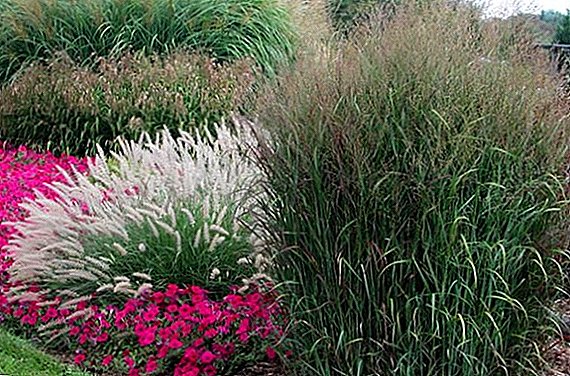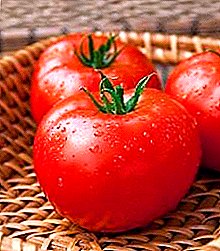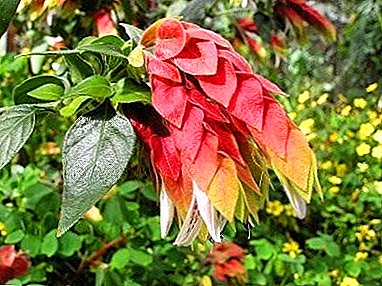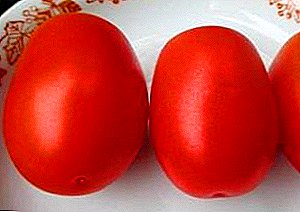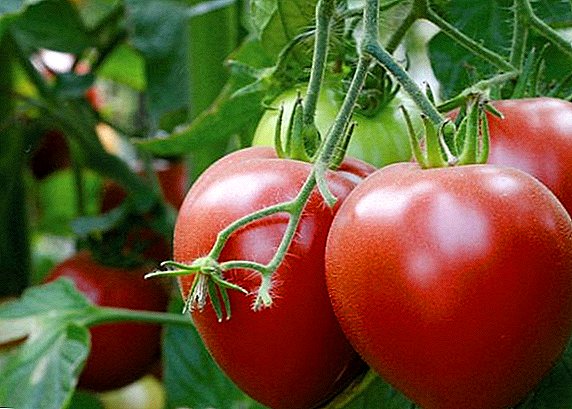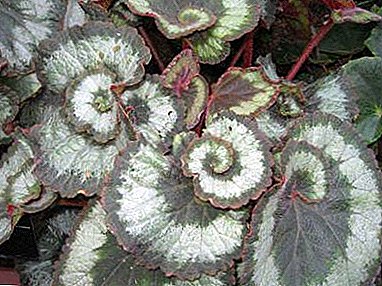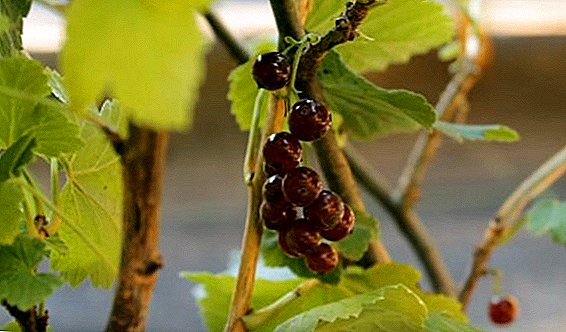 Today it is impossible to imagine a garden plot without red currant. This is one of the most common fruit shrubs and a source of vitamin berries, from which are prepared the most delicious jams, jams, compotes, jelly and much more. If you are still undecided on which currant to plant, then turn your attention to the excellent variety "Vixne" - about it later in the article.
Today it is impossible to imagine a garden plot without red currant. This is one of the most common fruit shrubs and a source of vitamin berries, from which are prepared the most delicious jams, jams, compotes, jelly and much more. If you are still undecided on which currant to plant, then turn your attention to the excellent variety "Vixne" - about it later in the article.
About variety selection
The variety of red currant "Vixne" (other names - "Red Vixne", "Cherry Vixne") was obtained on the basis of the planted seeds of currant Varshevicha. Breeders A. B. Viksne, T. S. Zvyagina bred a variety in the mid-1990s at the stronghold of the Ogre Fruit and Vegetable Experimental Station in Latvia.
In 1997, Viksne was included in the State Register of Breeding Achievements and was allowed to cultivate in the North-West and Central Chernozem regions.
Important! Viksne (Latvian. Vīksne) is a widely popular Latvian last name, also found in Russia. It is derived from the Latvian word "vīksna", which in Russian means "elm".
Description and characteristics
Let's look at how the bushes and berries of the red currant "Vixne."
Shrub
An adult plant is a tall, medium-sized, compact bush up to 1.5 meters high, having an irregular shape due to the uneven growth of shoots.  "Viksne" has thick, straight, undulating dark brown shoots with a grayish tinge. His buds are small, elongated, sessile, colors of shoots.
"Viksne" has thick, straight, undulating dark brown shoots with a grayish tinge. His buds are small, elongated, sessile, colors of shoots.
The leaves of the variety are large and medium, smooth, straight, dull, five-lobed, dark green with wavy edges. The leaf plate is stretched out horizontally, is naked on top and hairy on the bottom.
Medium-sized deep-eared flowers are collected on large, dense racemes 10–15 cm long and, after ripening, give a rich harvest of berries.
Berries
 Brush "Vixne" thickly cover the berries of medium-large size (0.7-0.8 g) of rounded shape, medium density and cherry color. The taste of the fruit is sweet and sour, pleasant and fresh. Inside them is a small number of egg-shaped seeds. Fruits have a high concentration of vitamin C (up to 38 mg per 100 g) and pectin substances that promote the excretion of heavy metal salts from the body.
Brush "Vixne" thickly cover the berries of medium-large size (0.7-0.8 g) of rounded shape, medium density and cherry color. The taste of the fruit is sweet and sour, pleasant and fresh. Inside them is a small number of egg-shaped seeds. Fruits have a high concentration of vitamin C (up to 38 mg per 100 g) and pectin substances that promote the excretion of heavy metal salts from the body.
The fruits of red currant varieties "Sugar" very sweet and pleasant to taste, making it perfect for preservation and for fresh consumption.
Some features of the variety
So, consider what the "operational" characteristics of a variety are - resistance to pests and diseases, drought and frost resistance, yield and transportability, as well as how best to use the berries in cooking.
Disease and pest resistance
Currant "Vixne" has good resistance to diseases and various fungal infections, but is susceptible to attacks. red gall (currant) aphid.  In order to prevent the occurrence of a pest, it is necessary to regularly weed around the bushes, since they can contribute to its reproduction.
In order to prevent the occurrence of a pest, it is necessary to regularly weed around the bushes, since they can contribute to its reproduction.
Such signs as redness of the leaves are characteristic of the red-pea leaf aphid and anthracnose.
The variety is relatively resistant to anthracnose. To avoid decay of currant roots, it is necessary to water the bushes moderately and not plant them in swampy areas.
Drought resistance and frost resistance
Currant "Vixne" refers to frost resistant varieties. However, its fruit buds may suffer a little while affecting several factors - negative temperature, high humidity and strong wind, but this will not lead to noticeable crop losses.
The variety has an average resistance to drought, and in the absence of regular watering its berries will be smaller and less juicy.
Ripening period and yield
"Viksne" refers to mid-grade varieties, ripening berries falls in the middle of July.  The variety is high-yielding, and with good care, one adult plant gives long-term yield of 5 kg of berries per season.
The variety is high-yielding, and with good care, one adult plant gives long-term yield of 5 kg of berries per season.
Transportability
Red currant "Vixne" - a valuable variety for industrial cultivation for the processing of berries. He has good transportability. In addition, the berry is stored for a long time on the bush after ripening, without losing its taste and not spoiling.
It is interesting to read about the benefits and use of red currants.
Direction
Varix berries - universal destination, skoroplodny, dessert taste. They are usable fresh, but not stored for a long time.
Of these, you can make a wonderful jam, jelly, jam or stewed fruit. Berries are added to pastries and desserts, they make a delicious syrup for ice cream. Also, fruits are great for freezing.  One of the advantages of the variety is that its small and rather soft seeds are practically not felt when eating berries.
One of the advantages of the variety is that its small and rather soft seeds are practically not felt when eating berries.
Familiarize yourself with the recipes for preparing red currants: jam, jam, compote.
How to choose seedlings when buying
Seedlings should be purchased only verified sellers in specialized stores, so as not to bring to the site of disease or pests. It is best to buy in local nurseries, then these plants will take root better and will bear fruit longer. In addition, the seedling will be guaranteed exactly the variety that you have chosen.
When choosing a sapling, take a specimen with a lush, well-developed root system and a ground portion of at least 40 cm. The bark may be covered with longitudinal cracks and partially peel off, which is completely normal. The main thing is that the roots and shoots should not look dry, alive, elastic. If there are leaves on the seedling, then inspect them, like all other parts of the plant, for no symptoms of disease, pests or rot. 
Landing rules
In order to properly plant the red currant "Vixne", you should follow certain rules.
Optimal timing
Landing "Viksne" made in the warm season - in the early autumn, in September. Currants can be planted in the spring, but since the process of its growing season begins very early, it is better to do it in the fall. Then the seedling will have enough time to take root, acclimatize and give the first shoots in the spring.
Did you know? Unripe currant berries contain four times more vitamin C, able to protect the body from viral diseases and strengthen the immune system than ripe ones. As it ripens, the amount of ascorbic acid in the berries decreases and becomes especially low in over-ripe fruits.
Location selection
For this variety is better to choose sunny or semi-dark open space without drafts. "Viksne" will bring a good harvest on light, well-hydrated, drained, slightly acidic, loamy or sandy soils. Planting it in heavy and clay soil can lead to a weakening of the root system and slow growth of the bush.  The variety is not too demanding on soil fertility. But in very wet or marshy ground it is better not to plant it - the level of groundwater should not be closer than 75 cm from the surface of the earth.
The variety is not too demanding on soil fertility. But in very wet or marshy ground it is better not to plant it - the level of groundwater should not be closer than 75 cm from the surface of the earth.
Learn more about the basic properties of the soil and its composition, acidity and fertility.
Stepwise landing process
For planting dig up grooves or beds where bushes are planted at a distance of at least 1.3 m from each other. If you plant them closer, the plants will shade each other and the berries will begin to shrink.
For one or two seedlings can be used patching: in advance (3-4 weeks), pits with a diameter of about 50 cm and a depth of about 40 cm are excavated. The planted plant is filled with the received nutritious soil.
After planting the seedlings, the soil is well compacted, each bush is watered with one bucket of water, and the soil is mulched.
Video: planting red currants
Basics of seasonal care
Caring for the red currant "Vixne" is watering, pruning, fertilizing, sheltering for the winter and caring for the pristvolny circle of the plant.
Check out our red currant care tips.
Watering
Although the variety is not particularly picky about moisture, periodic watering is necessary, especially during the fruiting period. In this case, the water is poured on the tree pristvolny circle.
The amount of water depends on the ambient temperature and the degree of dryness of the soil. On average, watering should be carried out 2 times a week, while 2-4 buckets of water should be poured under each bush, depending on its size and soil moisture.
If the soil is still quite wet, you can skip the next watering. 
Caring for a circle
For pristvolnom circle currants need to certainly care. Weeds should be weeded as they clog the soil and prevent the plant from growing well. In addition, they can be the source of the spread of aphids. After watering the bushes the soil is recommended loosen and mumble with fallen leavesthat will allow as long as possible to preserve its moisture.
Since the root system of red currant is placed shallowly, you should be as careful as possible in the processing of the tree circle so as not to injure the roots of the plant.
Did you know? In antiquity, currant was called "monastic berry" because it grew in almost all monasteries and was used there not only as food, but also for medicinal purposes. The first mentions of currants in Novgorod and Pskov monasteries are dated to the 11th century. And only a few centuries later the berry settled in ordinary gardens.
Top dressing
Currant varieties "Vixne" should be fed twice - immediately after flowering and two to three weeks before the berries ripen.
During the growing season (spring or early summer), nitrogen fertilizers should be applied - ammonium nitrate (30 g per bush) or urea (20 g per bush). After flowering and at the beginning of the ovary, bird droppings are introduced (1:12) or mullein (1: 5) at the rate of 1-1.5 buckets per bush.  In the autumn, when digging up the soil, phosphate (8 g per square meter) and potash (12 g per square meter) fertilizers should be added. As the latter, you can use wood resin, which also contains phosphorus, calcium and a number of other valuable elements. If the bush is strong enough, with large leaves and numerous berries, then autumn feeding can not be carried out.
In the autumn, when digging up the soil, phosphate (8 g per square meter) and potash (12 g per square meter) fertilizers should be added. As the latter, you can use wood resin, which also contains phosphorus, calcium and a number of other valuable elements. If the bush is strong enough, with large leaves and numerous berries, then autumn feeding can not be carried out.
Important! The greatest effect comes from the simultaneous application of mineral and organic supplements. However, chlorine-containing forms of fertilizers should be avoided, because red currants are very sensitive to chlorine.
Pruning
For quick and proper development of currant after planting it should be cut off, leaving 2-3 buds on each shoot.
Adult specimens do not need to be cut, as old shoots still remain fruitful. You can only remove dried or affected branches in the spring, and in no case cut off the top of the plant. 
Winter cold protection
Although the variety is cold-resistant, young plants planted in autumn up to 0.8 m in height for the winter should cover with a layer of fallen leaves.
Learn more about seasonal currant care: in spring, autumn (preparation for winter).
The advantages and disadvantages of the variety
Grade advantages:
- excellent yield;
- high marketability and taste;
- no tendency to fall berries;
- good frost resistance;
- average drought tolerance;
- versatility variety.
Grade Disadvantages:
- fertilizer requirements;
- klasnogallovoy affection affection.
Video review currants "Vixne"
So, despite some shortcomings, the advantages of the red currant "Viksne" undoubtedly outweigh them. Having planted a couple of bushes of this variety at your dacha or a private plot, you will get an unpretentious, resistant plant and a rich harvest of delicious and vitamin berries.



